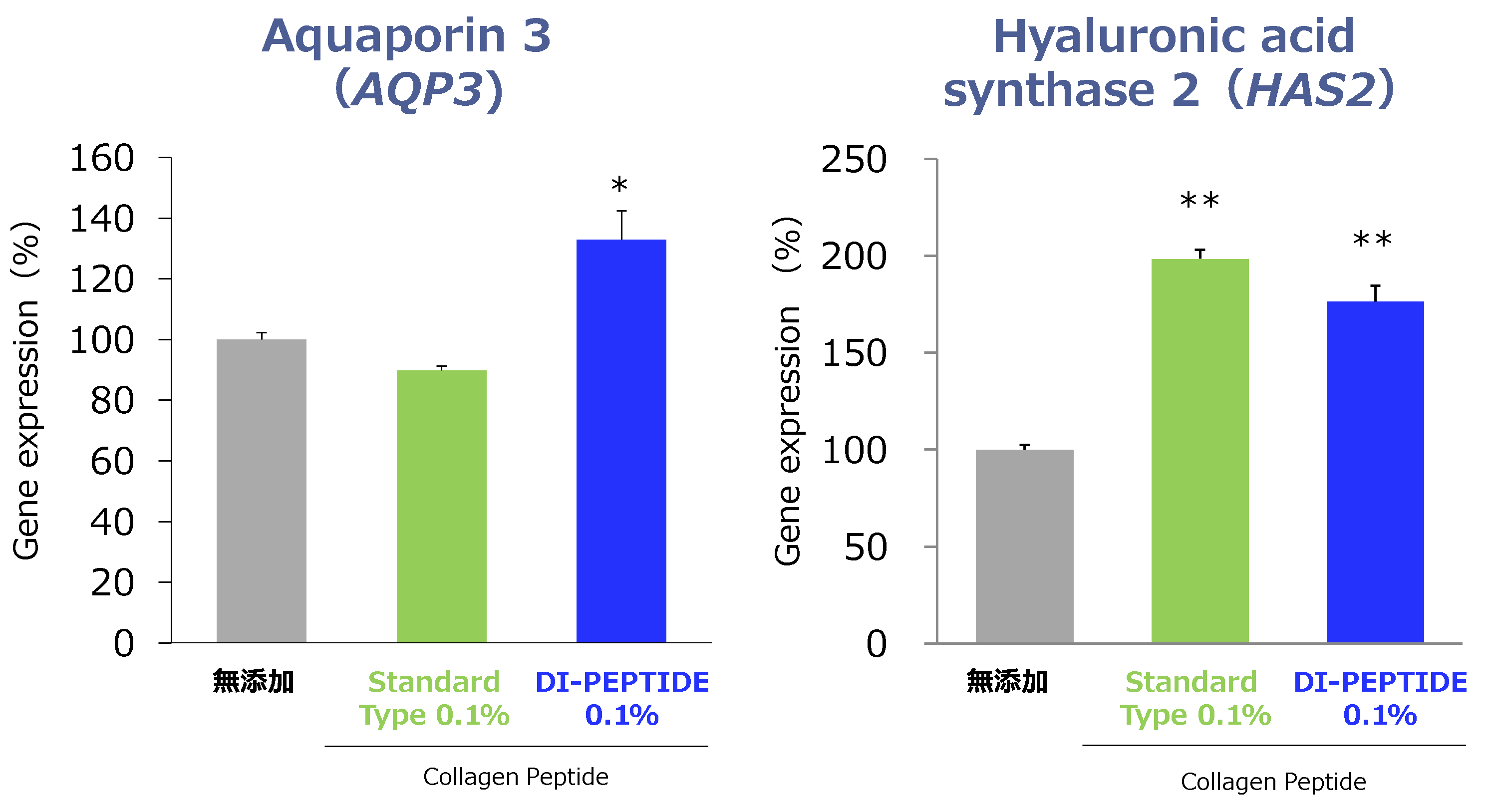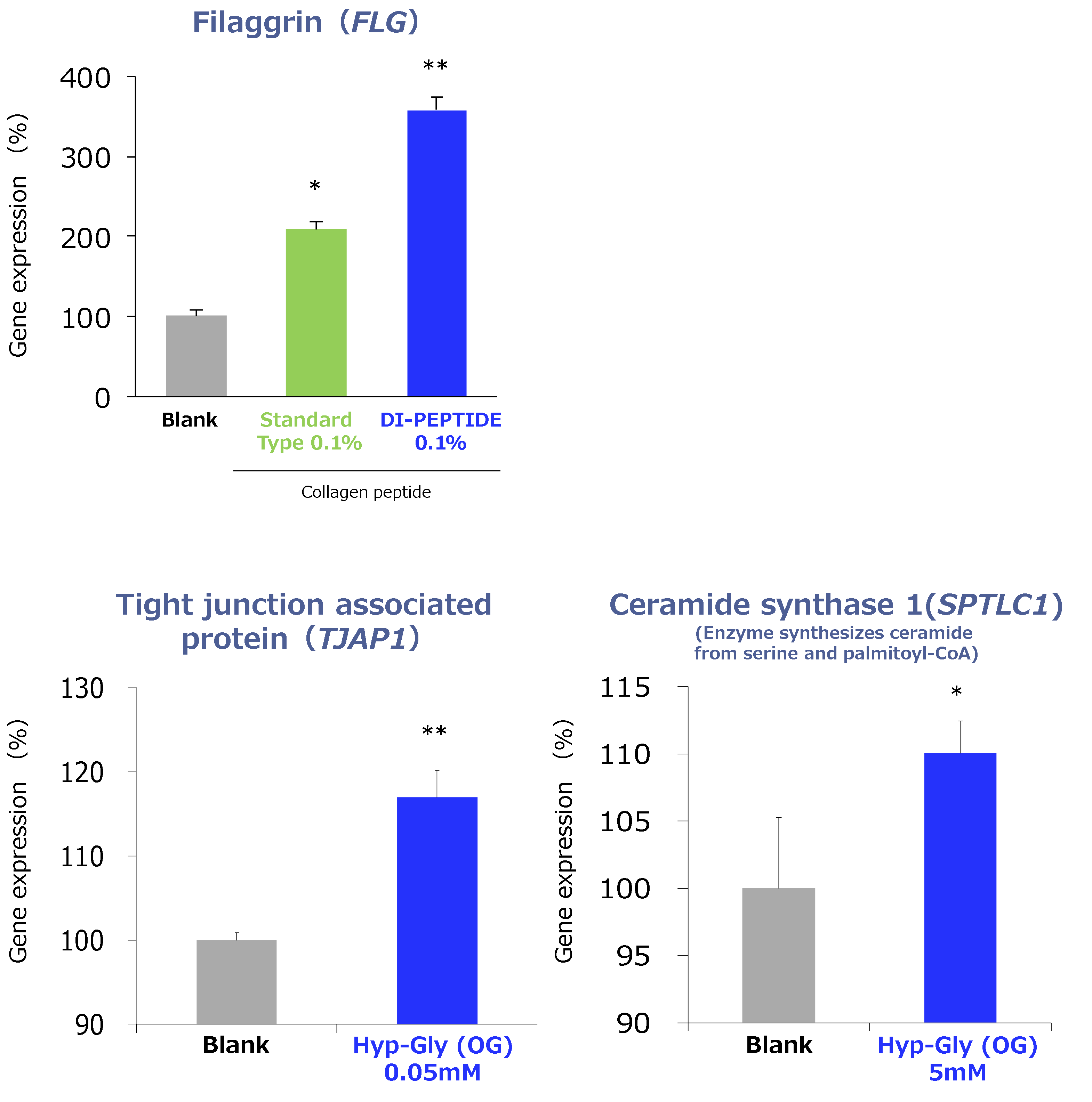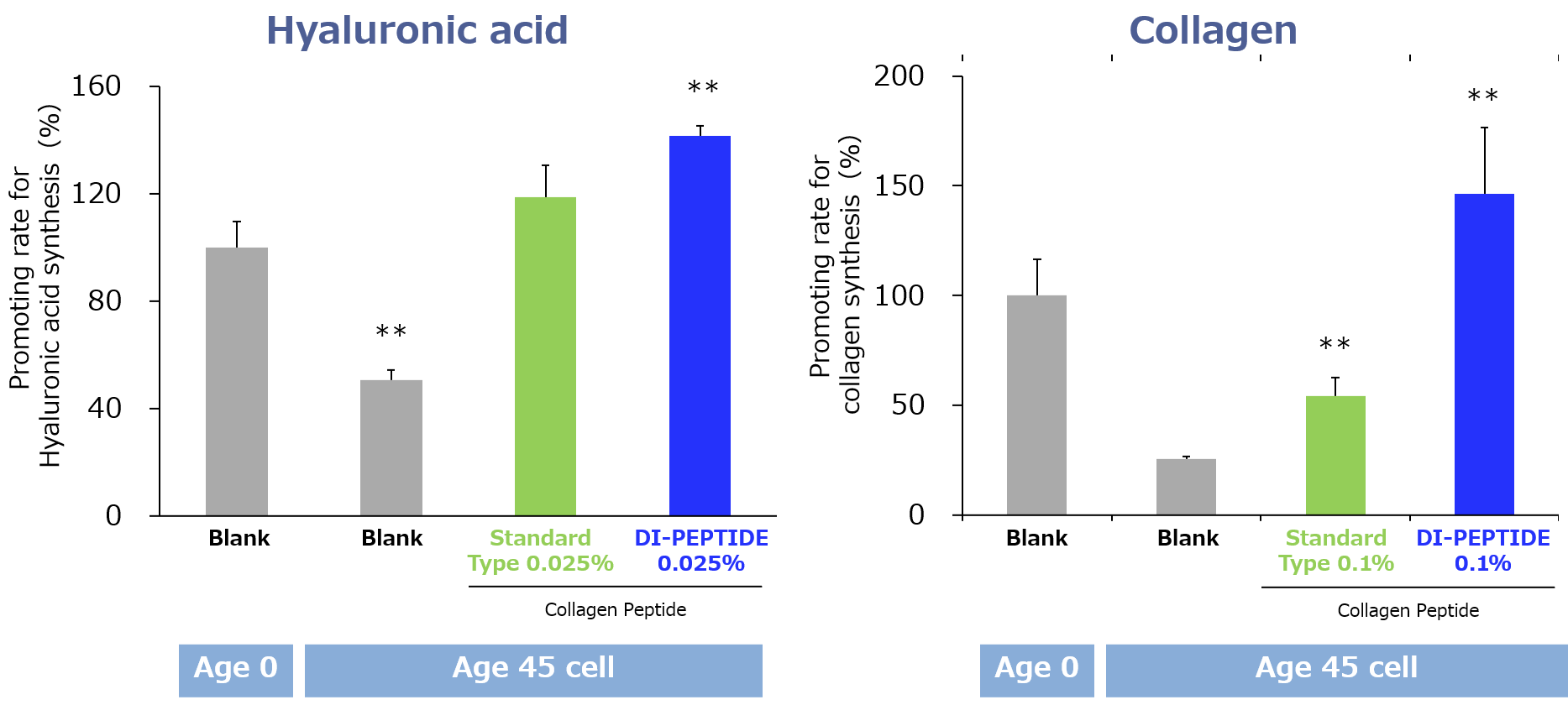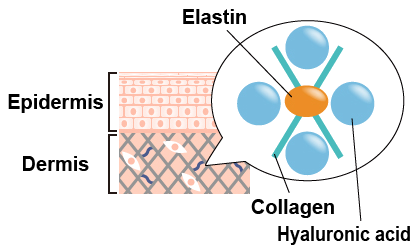| 3-6. | Effect on Moisture |

Gene expression measured by RT-PCR using normal epidermal keratinocytes
Mean±SE, Tukey test, *p<0.05, **p<0.01 (vs Blank)
Reference:Research results by Nitta Gelatin Inc.
It was shown that the addition of DI-PEPTIDE promotes the expression of epidermal turnover (skin metabolism) and moisturizing related genes.
In the upper layer of the skin (epidermis), instead of the absence of blood vessels, water is regulated by circulating water through aquaporin channels, which are water passageways, and nutrients are transported.
Aquaporin 3 (AQP3) expresses on epidermis, and plays an important role in skin water retention, elasticity, and barrier function.


Reference:Research results by Nitta Gelatin Inc.
Gene expression measured by RT-PCR using normal epidermal keratinocytes
Mean±SE, Tukey test, *p<0.05, **p<0.01 (vs Blank)
It was found that the addition of DI-PEPTIDE or Hyp-Gly (OG) promotes the gene expression related to the barrier function in cultured epidermal keratinocytes. The promotion of barrier function might prevent loss of water in skin and enhances the water retention.
It is decomposed with turnover of skin and becomes a part of natural moisturizing factor (NMF) to moisturize skin.
A connection between cells in the epidermis. Prevents water loss of skin and protects from foreign substances.
A lipid exists between cells and retains water.

The amount of hyaluronic acid and collagen produced in the dermis decreases with aging. However, when DI-PEPTIDE was added, the synthesis level was promoted to the same as that at 0 years old or more.

Reference:Research results by Nitta Gelatin Inc.
Measured by ELISA using normal dermal fibroblasts
Mean±SE, Tukey test, **p<0.01 (vs age 0 Blank)
| 3-7. | Effects on Elasticity |

Gene expression measured by RT-PCR using normal dermal fibroblasts
Mean±SE, Tukey test, **p<0.01 (vs age 0 Blank)
Reference:Research results by Nitta Gelatin Inc.
Gene expression measured by RT-PCR using normal dermal fibroblasts (age 0)
After UV irradiation (25,000µJ/cm2).
Mean±SE, Tukey test, **p<0.01 (vs UV- Blank)

Elastin plays a role in maintaining resilience of the skin and suppressing wrinkles. However, the elastin gene expression decreases with aging. The addition of DI-PEPTIDE promoted the expression of elastin gene to a level that was not significantly different from that at 0 years old. When exposed to UV, elastin gene expression is reduced and wrinkles and sagging are more likely to occur. However, in the presence of DI-PEPTIDE, it was shown that the expression level of elastin gene was significantly increased even when UV irradiation was performed.

These are the components of dermis. Collagen has a network structure that mainly serves as a scaffold for cells. Hyaluronic acid plays a role of concrete filling the space between collagens. Elastin plays the role of an adhesive that binds the collagens together.
These exists in dermis, blood vessels and ligaments, and give the skin moisture, resilience and elasticity.






